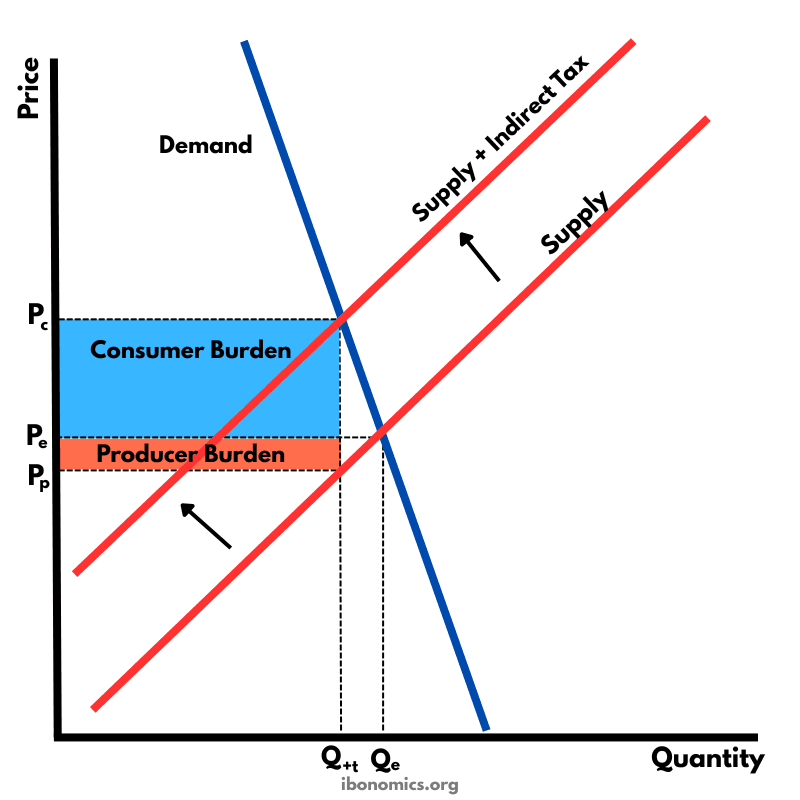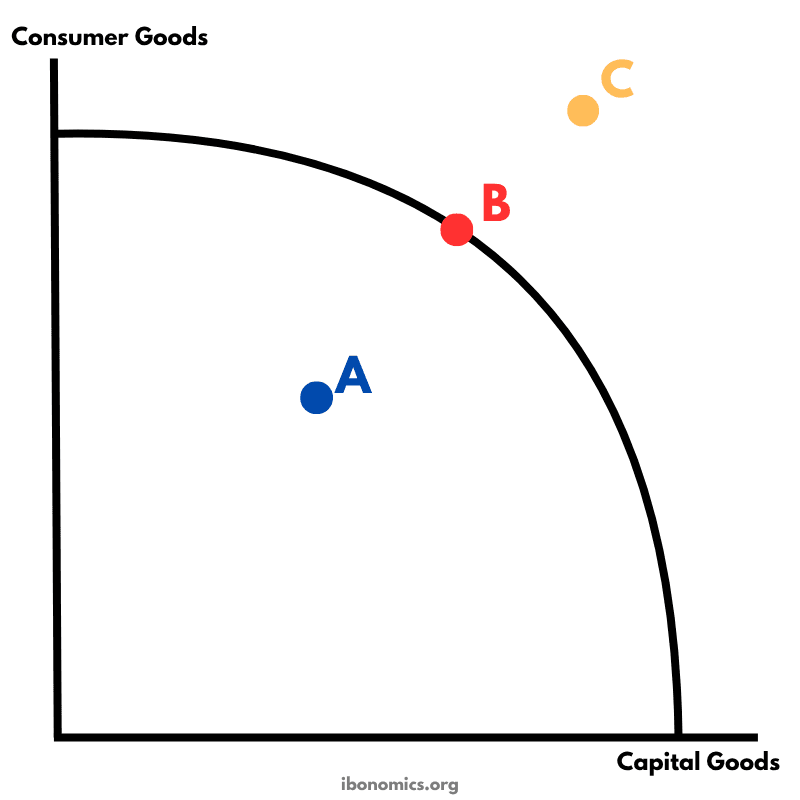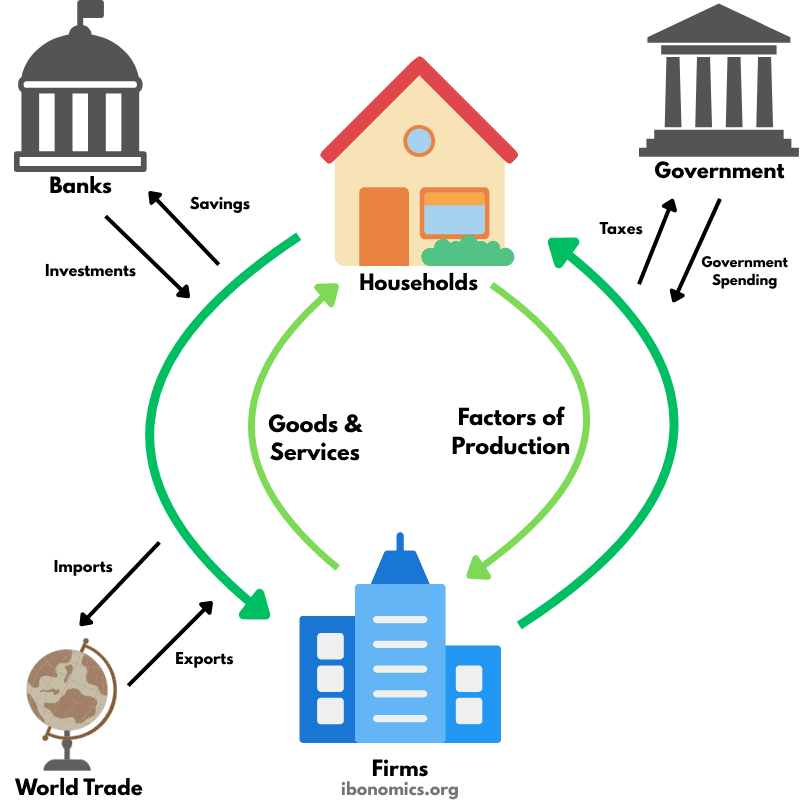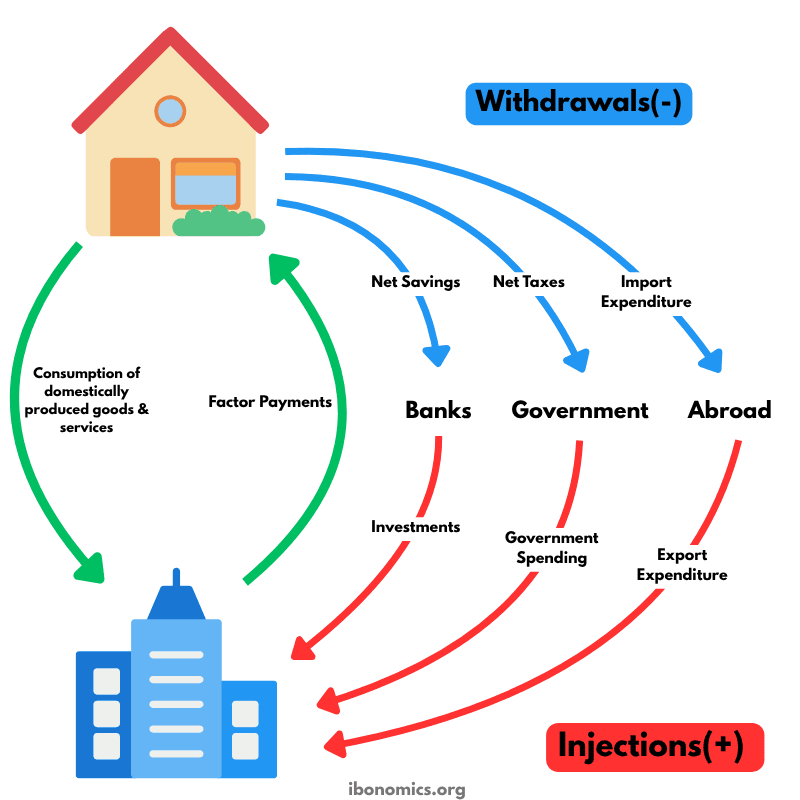Welcome to IBonomics! We are excited to launch and hope you find the website useful! Learn more about us here!
Welcome to IBonomics! We are excited to launch and hope you find the website useful! Learn more about us here!
This diagram shows how a government-imposed minimum wage above the equilibrium wage causes excess supply of labour, resulting in unemployment.

ADL: Aggregate demand for labour, downward sloping as higher wages discourage hiring.
ASL: Aggregate supply of labour, upward sloping as more workers are willing to work for higher wages.
Wm: Minimum wage set by the government, above the market equilibrium wage.
We: Equilibrium wage where ADL intersects ASL.
Ld: Quantity of labour demanded at the minimum wage level.
Ee: Employment level at market equilibrium (We).
Ls: Quantity of labour supplied at the minimum wage level.
Unemployment: The gap between Ls and Ld caused by the wage floor.
The equilibrium wage is at We, where the demand for labour (ADL) equals the supply of labour (ASL), and employment is at Ee.
A minimum wage Wm is introduced above We, setting a legal floor below which wages cannot fall.
At Wm, more workers are willing to work (Ls) due to the higher wage, but firms demand less labour (Ld), creating a surplus of labour.
This surplus represents unemployment, which is the horizontal distance between Ls and Ld.
Minimum wages aim to increase incomes for low-skilled workers but may lead to job losses or informal employment if set too high.
Explore other diagrams from the same unit to deepen your understanding

The fundamental diagram showing the relationship between demand and supply in a competitive market, determining equilibrium price and quantity.

A supply and demand diagram showing the effect of an indirect tax on a good with inelastic demand. The consumer bears a larger share of the tax burden.

A production possibility curve illustrating the concept of opportunity cost and the trade-offs between producing two goods: mangos and bananas.

A PPC diagram showing different levels of production efficiency and economic feasibility using combinations of consumer and capital goods.

A model illustrating how money, goods, services, and resources flow between households, firms, the government, the financial sector, and the foreign sector in an economy.

A refined circular flow model highlighting the roles of injections and withdrawals in determining national income and economic equilibrium.